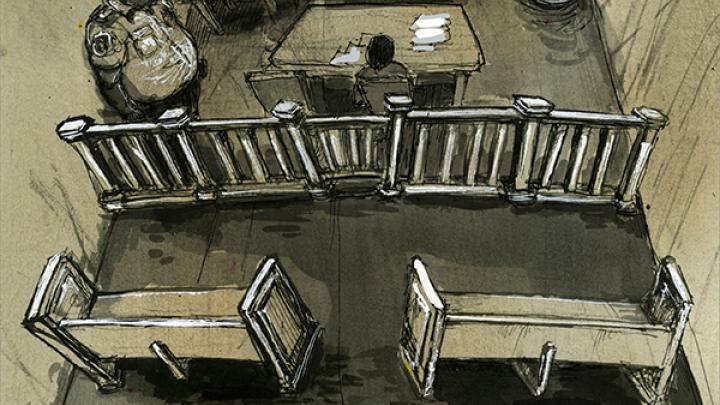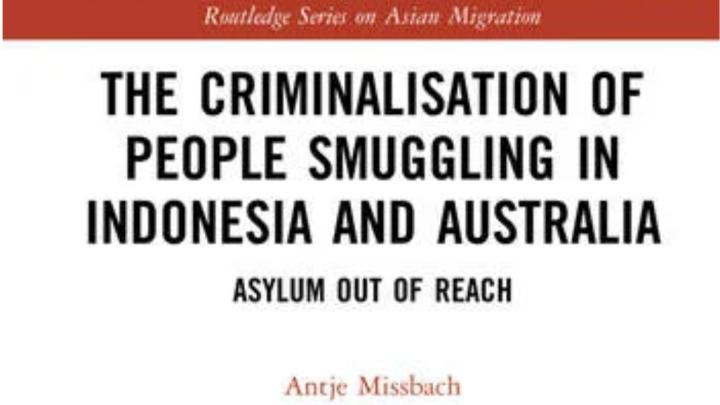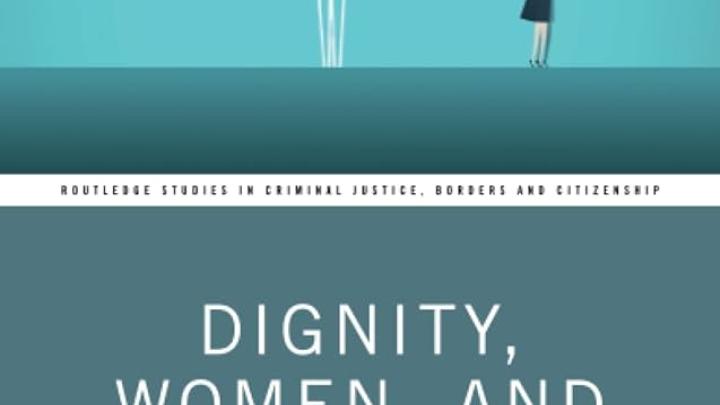Book Review: Legal Phantoms: Executive Action and the Haunting Failures of Immigration Law
Posted
Time to read
Guest post by Itır Aladağ Görentaş, PhD, Associate Professor at Kocaeli University Faculty of Political Sciences Department of International Relations Branch of International Law itir.aladagg@gmail.com
Review of Legal Phantoms: Executive Action and the Haunting Failures of Immigration Law by Jennifer M. Chacón, Susan Bibler Coutin, and Stephen Lee (Stanford University Press, 2024)
Executive Action and the Haunting Failures of Immigration Law by Jennifer M. Chacón, Susan Bibler Coutin, and Stephen Lee (Stanford University Press, 2024)
Jennifer M. Chacón, Susan Bibler Coutin, and Stephen Lee’s collaborative book offers a detailed analysis of the US migration governance system and discloses the real-life consequences of US immigration laws. The authors’ analysis is built on the lived experiences of immigrants, organisations that serve and work with them, and the insider views of policymakers and practitioners at the local, state, and federal levels. Accordingly, the book reflects the materialisation of legal regulations and failed executive promises and makes a prominent contribution to legal scholarship and critical migration studies.
The book is the product of a research project extended to ten years. It reflects the individual, organisational, and government-level consequences of the changes in the immigration landscape in the US between 2012 and 2022. In the Introduction, the authors provide a detailed overview of categorisations in US migration governance by explaining the scope of Deferred Action for Childhood Arrivals (DACA), Extended Deferred Action for Childhood Arrivals (DACA+), and Deferred Action for Parents of Americans and Lawful Permanent Residents (DAPA). The Introduction also explains that DACA+ and DAPA programs did not meet the expectations of “undocumented” residents of the country and, during the Trump era, how they eventually became “phantoms” with their failed promises. Building on this, Chapter 1 reveals the entanglement of criminal law with immigration law and a resultant hierarchy between “good” and “bad” immigrants for the decision of who is “worthy” of relief or who “deserves” to get deported.
The interconnections between immigration and criminal law revealed in Chapter 1 arises in Chapter 2 through a detailed analysis of the immigration policy enforcement differences at local, state and federal levels. To this end, the authors reveal that hierarchies of deservingness are often structured by arbitrary decisions based on race and place; “High-ranking immigration officials structure decisions about the exercise of removal power based on pragmatism and humanitarianism, yet their efforts are coupled with expansions of enforcement” (p. 61). This discretion leads to subjectivity and reflects power relations, while directly exacerbating already precarious status of non-citizens. As a result of the differentiated implementation of immigration law and enforcement, immigrant lives are stuck in a constant state of “uncertainty”. Chapter 3 addresses how immigrants and their allies adapt to “the forms of subjectivity created through enforcement initiatives and discretionary forms of relief” (p. 94). While migrant-serving organisations, rights-advocacy groups, and community groups are supporting immigrants navigating the shifting terrain, legal precarity makes individuals open to misinformation, which can lead to incidents of fraud during the constant process of preparation for possible deferred action. However, immigrant communities set their own rules whenever they can; they stand their grounds on belonging, merits, and deservingness to the immigration country.
Chapter 4 introduces the reader to the movement law concept, which provides the theoretical background on how immigrant organisations navigate and transform ‘a hostile and uncertain legal terrain’ (p. 269). Presenting a perfect example of performative citizenship, organisers and advocates ‘envision and enact law, legal institutions and social justice’, which the authors identify as “legal shapeshifting”. This term, first coined by Aimee Cox, was adopted by the authors to refer to the strategic and creative ways in which immigrant communities and their allies adapt to and challenge the constraints of immigration law (p. 128- 129). Accordingly, these organisers and advocates reject subordination and do not accept the constraints of immigration law. Rather than being reasonable and pragmatic in adapting to the imposed legal framework, they seek alternative ways to build solidarity, accountability, and engagement with immigrants. However, rights advocacy is affected by the changing and uncertain scope of immigration governance in the US, which requires organisations to be prepared for possible and dramatic policy changes. The need for constant preparedness also applies to the differentiated implementation of immigration law and policy across different locations. Chapter 5 delves into these locational differences of enforcement and how these spatial discrepancies affect even the most minor daily errands, such as dropping off a family member from home to school, from Los Angeles County to Orange County, with the fear of being encountered by law enforcement.
Chapter 6, ‘Performing Citizenship’, acknowledges ‘undocumented’ immigrants’ agency. Despite ‘shifting policies at all levels of government’ in the US, immigrants define citizenship in an unorthodox way that is detached from its legal meaning. Instead, some question the concept of citizenship; that legal status would not mean equal citizenship considering the racial discrimination, gender discrimination, and homophobia embedded in modern societies. While standing their ground, defining belonging, some nevertheless still reproduce boundaries drawn by the immigration governance and claim their self-worth through hierarchies of ‘otherness’, adopting the dichotomy between ‘good and deserving migrant’ and ‘bad and undeserving’. Though not widespread, the immigrants’ re-stigmatising remarks for other immigrant groups, especially Black communities, reflect the internalisation of systemic racialism in the US even by the racialised immigrant communities.
‘Legal Phantoms: Executive Action and the Haunting Failures of Immigration Law’ serves as a stark reminder that policy choices and legal regulations are not abstract; they have profound consequences on individuals’ lives, families, societies, and even transcend borders. The authors, drawing on their legal expertise and extensive fieldwork, critique the flawed immigration system in the US, a system that is not unique to this country. Their analysis underscores the urgent need for further research and policy considerations in immigration law. In a nation of 340 million, there are almost 11 million undocumented immigrants, and despite the legal violence they face and the precarity of their situation, immigrants choose to stay, and others decide to cross the US border every day. Their decision to migrate is not detached from the foreign policy choices of the US, or any other immigration country, or the needs of internal markets. It is imperative that further research and policy choices recognize these realities.
Any comments about this post? Get in touch with us! Send us an email, or post a comment here or on Facebook. You can also tweet us.
How to cite this blog post (Harvard style):
I. Görentaş. (2024) Book Review: Legal Phantoms: Executive Action and the Haunting Failures of Immigration Law. Available at:https://blogs.law.ox.ac.uk/border-criminologies-blog/blog-post/2024/07/book-review-legal-phantoms-executive-action-and. Accessed on: 08/09/2024Share
YOU MAY ALSO BE INTERESTED IN
With the support of












